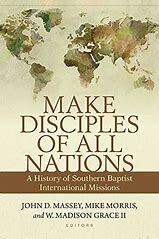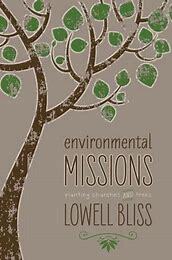Christian Missions Books I am Reading Right Now
For someone who blogs a LOT on Christian missions and Missions Theology I don’t really immerse myself that much in the “Missions Scene.” There is a pretty good reason for this. My wife is a Clinical Pastoral Education (CPE) supervisor and we have a pastoral counseling center. I end up doing a fair amount of work in training materials and articles in pastoral counseling and pastoral theology. I think it could also be argued that my more innovative (?) or at least important work is in pastoral theology.
But I also teach missions… and I don’t want to become yearly more out of touch and irrelevant. Therefore, one of my goals (or themes maybe?) is in terms of Missions/Missiology. I went to the EMS Southeast 2025 conference, my first missiological conference ever. This August I plan to attend a major missions conference in the Philippines (my first since 2022).
But right now, I am reading two missions books. This is not a review, since I am not done.
Book #1. “Make Disciples of all Nations: A History of Southern Baptist International Missions” edited by John D. Massey, Mike Morris, and W. Madison Grace II. (Kregel Academic, 2021).

I have been enjoying this book. While I don’t really wear my denominational badge very often, I am a missionary that was sent out by a Southern Baptist Church, and I teach at a Filipino Southern Baptist seminary. (Note: The Southern Baptist denomination— or convention if you prefer— is not the same as the Filipino Southern Baptists. They have historical ties, and the Filipino Southern Baptists tend to maintain a strong link to the Southern Baptists— for good and… less good.) As such, it is important to know the history of missions in my denomination.
I sort of cheated, reading the last two chapters first. Since politics has such a strong place in denominational… everything (pretty common in denominations generally), I wanted to see how modern Southern Baptist missions is written up. I was a bit surprised that it was handled quite well. Certainly there was an effort not to step on toes. Controversies were acknowledged, but with a lot less bias than I might have expected, especially since the editors are from seminary that has had a pretty biased position in many of the controversies. Also, these chapters helped fill in a lot of gaps in my knowledge on some of the changes of direction of Southern Baptist missions. These latter chapters pretty much exclusively focused on the International Mission Board of Southern Baptist Churches (IMB). While a lot of Southern Baptist missions exists outside of the IMB (my wife and I are examples of this), the size of the IMB relative to other groups is huge. Additionally, I have no idea how to study and classify non-IMB Southern Baptist missions.
After the last two chapters, I went back to the start of the book. I am happy that they started with pre-SB Baptist missions. They gave very appropriate honor to George Liele, in addition to the more commonly recognized William Carey, Adoniram Judson, and Luther Rice. Now, I am entering into the Triennial Convention period of Baptist missions. I am looking forward to seeing where the book goes from here.
Book 2. “Environment Missions: Planting Churches and Trees“ by Lowell Bliss. (William Carey, 2013).

Creation Care has gained prominence in missions in recent decades. I always struggle in how to look at it. Part of me wants to embrace a John Stott-inspired view of Social ministries and Spiritual ministries as two wings of an airplane or two blades of a pair of scissors. Part of me wants to give clear priority to evangelism, church planting, and discipleship. At the same time, I also feel that spiritual ministry is empowered in social ministry long-term. A church that ignores social concerns is an anemic church and, arguably, not a Christ-led church.
But then the question of Creation Care comes in. How do we look at this. Some would point to the first command of God to Adam to care for creation as a call of equal weight as the Great Commission(s). I certainly feel it is appropriate to roundly reject the view of many Evangelicals that God seems only to care about Creation to the extent that it provides an environment for humans. In other words, they believe that God only cares about people and nothing much else that He created.
But how should Environmental Missions be viewed in relation to Christian missions generally. Is it a distraction? Is it a platform for “real missions?” Should it be given equal status with Spiritual Missions and Social Missions? Certainly, ALL Christians should model good stewardship of what God created. If we embrace treating God’s creation like a landfill, that does say something (uncertain what) about our relationship with God.
Up to this point, I have only read a few pages at the start, and then looked at parts of the rest of the book. Will I read that whole book? I think I should, and it is quite interesting. I teach a class on “Holistic Missions” (or Integral Missions if you prefer), so I really should up my game in this area. I do think it is concerning that the people least concerned about care of God’s creation in the US and the Philippines often are Evangelical Christians. There seems to be something truly wrong in that. Some appear to think that this world is passing away and so it doesn’t really matter. That is a weird perspective I think, but also not really correct. Our eternal home is heaven and earth joined, not heaven alone. While this may be a “new” earth in some sense, the devaluing now of what will be our eternal home appears pretty unconscionable.
What I have read does suggest that the author, Lowell Bliss, recognizes that Creation Stewardship and Proclamation of the Good News of Christ are BOTH vital. I look forward to seeing how puts these together in practice.



